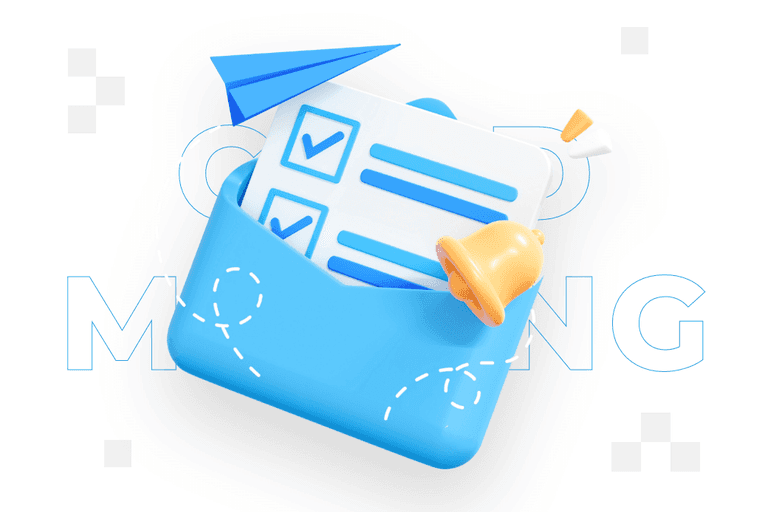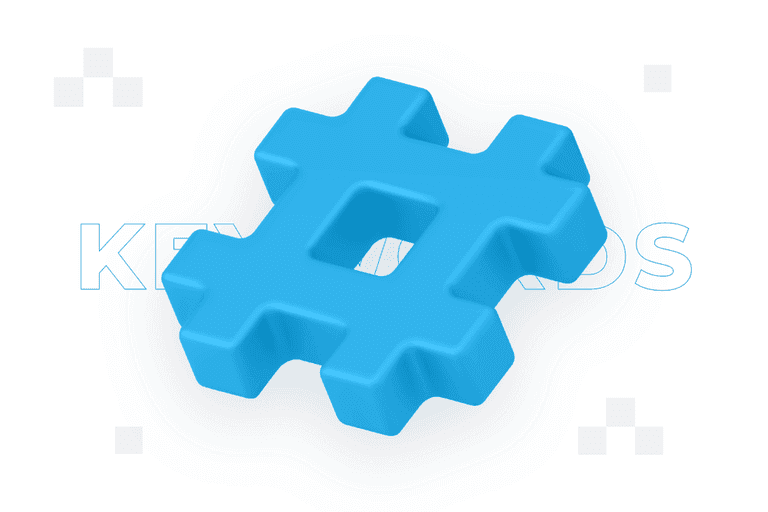
Cold mailing – what is it and how to do it well?

Cold mailing is one of the most effective ways to acquire customers. It is non-invasive, which can make a difference to many audiences today, but when running a cold mailing campaign you need to be mindful of legislation and good marketing practices.
From this article you will learn:
- What is cold mailing?
- What can you gain from cold mailing?
- What are good practices in the area of cold mailing?
- Which tools should be used for cold mailing?
Cold mailing – definition
Cold mailing is a direct marketing method that involves sending emails to potential customers who have not previously interacted with your company or expressed interest in its products or services.
The objectives are to create interest, provide information about a product or service and ultimately convert the recipient into a customer. Key to ensuring the effectiveness of cold emailing are personalisation and the value of the message conveyed, as well as avoiding practices that may lead to the message being flagged as spam. Also remember that emails are for 80% of customers[1] the preferred form of contact.
Cold mailing is a useful strategy in many different contexts, but it is particularly worth considering when:
- You want to acquire new customers, as cold mailing allows you to reach a wide range of potential customers at minimal cost.
- You are building brand awareness. Sending information about your company and its products or services to people who may be interested helps to increase your brand recognition.
- You are promoting a new product or service. If you are launching a new product or service, cold mailing can help you reach potential customers quickly and effectively.
- You want to reach a specific market segment, as with the segmentation capabilities of mailing lists you can target a very specific audience.
Remember, however, that the success of cold mailing depends on many factors, such as the quality of the mailing list, the content of the message, the timing of the mailing and many more. Also remember that no matter what country you operate in, you must comply with privacy and data protection laws. Many jurisdictions have strict rules on when and how you can contact potential customers directly. In Poland, such activities are regulated by the Electronic Services Act and the RODO.
Cold mailing is a marketing strategy that involves sending messages (often emails) to potential customers who have had no previous interaction with the company. The aim is to build interest, provide information about the product or service and convert the recipient into a customer.
Definition of cold mailing.
Benefits of cold mailing
Cold mailing allows companies to reach new potential customers who may not know about their products or services.
Using cold mailing, it is therefore possible to acquire leads, thus expanding the customer base and increasing the reach of the brand. It also allows direct communication with the potential customer and helps to build trust.
Compared to other forms of marketing, such as television advertising, cold mailing is relatively inexpensive. The costs associated with sending emails are small, especially if a company has its own email marketing tools. In addition to this, emails can be easily personalised to the recipient. Personalisation can include everything from the recipient’s name to information related to their industry, interests, location and other data.
With email marketing management tools, companies can easily track how many people are opening messages, clicking links, responding to emails and then converting into customers. Remember, however, that effective cold mailing requires a well thought-out strategy, well-defined objectives and continuous monitoring of results. Also, compliance with the law is absolutely key in order to avoid penalties for data protection violations.
Best practices in cold mailing
Conducting effective cold mailing requires a careful strategy and a thoughtful approach. Remember that success in cold mailing depends on, among other things, the quality of your database, the quality of your message and the very product or service you are offering.
Here are some best practices that can help improve the effectiveness of your efforts:
Personalisation
Personalisation in cold emailing is a key element that determines the effectiveness of the message. It’s more than just adding the recipient’s name to the headline – it’s fine-tuning the content of the message to the specific needs, interests and context of the recipient. This allows for a more direct and personal contact. Knowledge of the recipient’s industry, company and even individual preferences can be used to create messages that evoke a sense of individuality. This attracts attention in a crowded inbox and builds lasting relationships with potential customers.
Brevity and precision
In an age of information overload, time is precious and your message is competing with hundreds of other emails. It therefore needs to grab attention quickly and get your message across. Long, long-winded and vague messages can discourage the recipient, leading them to close the email immediately. Instead, opt for brevity – clearly and precisely communicate what you are offering, what the benefits are for the recipient and what they should do next. Avoid complicated language and industry terminology. Try to speak the language of the recipient, which will increase the likelihood that they will take an interest in your offer.
An interesting title
The title of an email is like the business card of your message – it is the first element the recipient pays attention to. For this reason, it should not only be interesting and eye-catching, but also accurately reflect the content of the message. A good title should arouse curiosity, evoke emotion or emphasise the value the email will bring to the recipient. It’s worth avoiding clickbait, which may seem attractive but is often seen as misleading, which can damage your brand reputation. Always try to keep the title in line with the content of the email and deliver value to the recipient.
Add value
Recipients are far more likely to interact with messages that provide them with something of value, rather than simply promoting products or services. This value can take many forms, such as information, tips, advice or even special offers or discounts. The aim is to show the recipient that you care about their interests and not just a sale. Not only does this increase customer engagement, but it also builds trust and credibility in your brand, which in the long run can turn potential customers into loyal customers. When planning your cold mailing, always ask yourself “What’s in it for my recipient?”.
Professionalism
Professionalism in cold emailing is an absolute must. The messages you send are a direct reflection of your business, so they should be grammatically and spelling correct and express respect for the recipient. Remember that first impressions are key, and mistakes, carelessness or an inappropriate tone can damage your reputation. Always review and edit messages before sending to ensure they present your company in the best light.
Remember that your email address also builds a professional brand image. Use the same address — research shows that emails sent from the same address increase the likelihood of a response by 93%[2].
Comply with legislation
Many countries have introduced data protection and privacy regulations, including the requirement to obtain consent for emails. Messages should always include an option to opt-out of receiving further communications, as well as details of the sender’s contact information. Failure to comply with these regulations can lead to serious legal and financial consequences, so it is always worth seeking legal advice to ensure that your actions are fully compliant with the law.
In Poland, cold mailing campaigns should be mindful of RODO. One of its provisions states that it is prohibited to send commercial offers to people who have not given their prior consent. At first glance, this limits the effectiveness of cold mailing, but there is a way to make cold mailing compliant with RODO regulations.
Firstly, only send messages after you have obtained consent from the potential customer. Asking for consent can also have a positive impact on your image and convince the recipient that you are professional. Secondly, only send emails to legally acquired contacts and always indicate the source from which you obtained the recipient’s email address. Thirdly, don’t present a sales offer in the first email – an introductory description of your company and the industry you operate in will be more effective. Leave the offers for subsequent emails.
Mailing list segmentation
Mailing list segmentation is a strategy that divides your recipients into smaller, more personalised groups based on various criteria such as industry, job title, location or interests. This allows you to tailor your message content to the specific needs and interests of each segment. Instead of sending the same messages to everyone, it is better to hit their needs and expectations with personalised emails. These usually have higher open and click-through rates, which translates into better results and a greater return on investment.
The right time to send
Sending your message at the right time increases the chances that the recipient will see and read your message. Studies show that messages sent in the middle of the week, especially on Wednesday[3], have the highest open rates – but bear in mind that not all your emails will be opened. Research by Gartner shows that only 23.9% of cold emails end up being opened[4]. Of course, the best time may vary depending on your industry and audience, so it’s worth testing and adapting your strategy to suit your needs.
Follow-up
If you are not receiving a response to your initial email, sending a follow-up email can be a good option. Such an email reminds the recipient of your enquiry and can increase the chances of a response. However, it is important to balance the need to keep in touch with respect for the recipient’s time and space. Sending too many messages can give the impression of being pushy. If you do not receive a response after several attempts, this may be a signal that the recipient is not interested. In this case, it is best to respect his or her decision and focus on other potential customers. Always remember to use the right tone and respect the recipient, even if they do not respond to your messages.
A clear Call to Action (CTA)
Every email you send should contain a clear and prominent call to action, or Call to Action (CTA). This could be to contact you, visit your website, sign up for a newsletter or take advantage of a special offer. Without a clearly defined CTA, the recipient may not know what they should do next, which can reduce the effectiveness of your message. Remember to keep your call to action simple, understandable and easy to follow. Also ensure that it is easily noticeable in the body of the message.
Incorporate social proof
Social proof of equity, such as testimonials from satisfied customers, industry awards or impressive statistics about your company’s success, can add credibility to your message and convince the recipient to take action. People often rely on the opinion of others when they have to make a decision, so showing that others already trust your company can be very effective. However, remember to keep this evidence honest and truthful – inappropriate or false evidence will damage your reputation.
Testing and optimisation
Different cold mailing strategies and techniques can work differently for different audiences, so it is important to test and optimise your messages regularly. There is no one-size-fits-all solution that works in all situations. What’s more, what is effective for one company may not produce the same results for another.
A/B testing, i.e. comparing two versions of a message to see which works better, can be very useful here. It is also important to constantly track metrics, such as the number of opens, clicks or conversion rate, in order to monitor effectiveness and make the necessary changes.
Cold mailing tools
Check out the best cold mailing tools available on the Internet.
All of the tools listed below offer different features and are priced differently, so it is worth testing a few of them to find the one that best meets your needs. Here are a few of them:
- Mailshake – a powerful cold emailing tool that allows you to automate the sending of emails, as well as track opens and clicks. It offers ready-made email templates that you can customise to suit your needs.
- Hunter.io – helps you find email addresses associated with a specific domain. This is useful when you are trying to reach people working for specific companies.
- Snov.io – offers a number of features, including email address lookup, email sending, open tracking, and message verification features to help make sure your messages reach the right people.
- Reply.io – a sales automation platform that allows you to personalise emails on a large scale. It also offers the ability to track opens, clicks and replies, as well as manage tasks and reminders.
- Lemlist – allows you to create personalised emails with dynamic images and content. It also offers tracking and performance analysis features.
- Woodpecker – cold mailing automation tool that allows you to personalise messages, track responses and opens, and manage follow-ups.
- Yesware – an email tracking tool that offers information on when, where and how often your messages are opened. It also allows you to create personalised message templates.
- Voila Norbert – an email address search tool that allows you to quickly find the email addresses of people you want to contact.
FAQ
Contact form
Develop your brand

Rate content:
You may be interested in:





